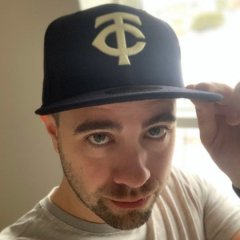
Twins Video
On Tuesday night, Hughes was gritty. It was an admirable outing, without question. One day after the worst start that the Twins have seen in many years, he took the ball and gave a hell of an effort, weaving his way through six shutout innings without having much bite on any of his pitches. The veteran hurler was crafty enough to cruise through the lineup twice but warned his manager before the seventh that he was running out of gas. At this point, he hadn't thrown 70 pitches.
This is the most pronounced and clear-cut example of something that's been noticeable for some time: for whatever reason, the right-hander's arm strength is deteriorating. He admitted to shoulder fatigue after Tuesday's game, and this isn't a particularly new development. It's a situation that needs to be monitored and handled very carefully, given how deeply the Twins have invested in him.
Terry Ryan went all-in on Hughes following a fantastic debut in Minnesota, signing the former Yankee to a three-year extension despite the fact that two seasons remained on his original deal. It was an odd move but was reflective of the sheer excellence Hughes displayed in 2014, when he pitched like a legitimate ace, and the dire need for any kind of sustained reliability in the starting corps.
The favorable terms of Hughes' deal made it palatable to even those who felt he was very unlikely to repeat his sterling results from that first season with the Twins. His average annual salary in the reconfigured contract was less than $12 million, which is roughly the going rate for an average mid-rotation starter in free agency. With his pinpoint command and his history of missing bats at a reasonable clip, he seemed like almost a sure bet to at least maintain at that level, even if his historically incredible strikeout-to-walk ratio was bound to normalize a bit.
The other point of reassurance in the Hughes extension was his age. Still amidst his theoretical prime, the righty would still be 33 at the end of his renewed pact. That's the same age that fellow free agent signings Ervin Santana and Ricky Nolasco are now.
Yet, Hughes' arm is exhibiting the signs you might expect to see from someone that age. His velocity continues to decline – the fastball is now clocking at 90.4 MPH on average after registering last year at a career-low 90.7 MPH. He told reporters that his fatigue issue dates back about four starts but a glance at the chart below from Brooks Baseball shows a downward pitch speed trend dating back much, much further – basically to the start of his Twins tenure.
Unsurprisingly, this drop has coincided with worsening results. To his credit, Hughes has been holding his own, owing almost entirely to his truly elite control, but now even that isn't getting him by. On a night where he finally managed to get outs (albeit several hard-hit ones), he couldn't get through 80 pitches.
Sticking with the status quo doesn't seem to be an option here. Hughes is going to be here through 2019 and his long-term outlook is the foremost concern. If he's going through a dead arm period it's been gradually building up for quite a long time, and that doesn't seem to be a great sign. Given the growing irrelevance of this season, it might be wisest to shut him down for a while.
The hits keep on coming.
MORE FROM TWINS DAILY
— Latest Twins coverage from our writers
— Recent Twins discussion in our forums
— Follow Twins Daily via Twitter, Facebook or email
— Become a Twins Daily Caretaker






Recommended Comments
Join the conversation
You can post now and register later. If you have an account, sign in now to post with your account.
Note: Your post will require moderator approval before it will be visible.